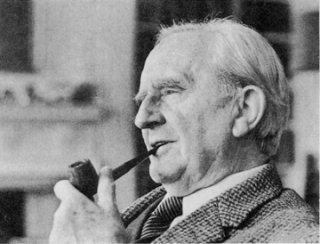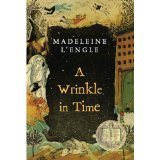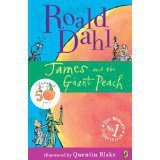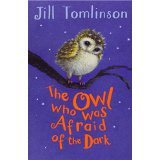Michael Davies's Blog, page 7
March 23, 2015
Overcoming Fear
Have you ever wondered, will they really like it? What if there’s a mistake the editor didn’t catch? What if it’s just boring to someone else?
Welcome to the world of writing. A world in which we pour out our heart and soul only to have it, edited, re-edited and then scrutinized by the general public. Some of whom, are destined to hate it. If you’re a novelist it’s likely you will even receive a��critical review from someone whose never penned��a novel in their life. I have that to look forward to.
In the process of creating this novel, Path of the Warrior, I’ve had to overcome various forms of fear. Here are some methods I use to help me.
1) Recognizing that I’ve published through an indie publisher. They��might not be on the scale of Penguin books, but they still believe in my work. It’s not just me, there are others out there supporting me. I know if you’ve published your work entirely��independently then this isn’t��something you can lean on. But it is something I lean on.
2) My beta readers liked it. Some had suggestions for improving, but none of them said it was bad. Draw on that for strength. Write down or save what they said so you can go back to it when you need one of those pick me ups.
3) My editor liked it. Despite all the red lines and comments he liked it. Just to be clear, I had 600 edits per chapter. Now, my chapters are pretty long but still, that’s 600 errors to my mind. He liked it. Make sure you have an editor who tells you the truth and then save his/her comments as well!
4) Not everyone will like my work. At some point I’ll find someone who thinks it’s too slow,��or there’s too much dialogue, or explaining, or description. I’ve come to accept that will happen. It’s okay, I wrote this novel primarily for me. I wanted a novel and a story I believed in. I do.
5) I believe in it. That’s the thing that matters most. I believe in it. Remember that, write it down if you have to – but believe in it. Even if there are errors, believe in what you’ve written. If you don’t, why should anyone else?
Fear. It’s with us every step of the way, but it’s worth fighting against. By May 15th I will have accomplished a dream. If you can say that, good. It doesn’t mean I won’t improve next time. It doesn’t mean I didn’t make mistakes. But it does mean I overcame fear. I put my work out there, and now I’m living a dream. Why don’t you live your dream too?

Leaf by Justice
This is a blog I read this morning, which I really like. Not only does it give a little insight into a lesser known short story of Tolkien, but I think it’s a fascinating read.
 Originally posted on Guild Of Dreams:
Originally posted on Guild Of Dreams:
 Lizzie Harper. Botanical Illustration ��� Tips on painting sketchbook-style studies of leaves ��� May 4th 2013
Lizzie Harper. Botanical Illustration ��� Tips on painting sketchbook-style studies of leaves ��� May 4th 2013
J.R.R. Tolkien, the father of the fantasy genre, wrote a short story called ���Leaf by Niggle��� (look for it in The Tolkien Reader). When I was a teen, just beginning to write my own stories, this story struck me as ���true,��� and it resonates even more strongly now. The first half of the story is about an artist named Niggle whose only work is a massive painting of a tree. The painting is never finished, and he continues to scrape away parts of it and paint them anew, because they never quite reflect his vision. Niggle���s neighbor sneers at Niggle���s lack of industry (as he spends his time painting a plant and neglects the real ones in his garden) and plagues him with requests for help running errands and doing home-maintenance projects. Niggle���
View original 659 more words

March 20, 2015
Designer Interview: Troy Black, cover artist for “Path Of The Warrior.”
Today I’ve interviewed Troy Black. He happens to be a published author, but is also my publisher and cover designer. Firstly, I want to say brilliant job. I’m obviously biased here, but I’ve received nothing but praise for the art work you’ve��produced.
Troy, I will ask you a number of��questions, but before we dive into that, I’m posting an image of your design. Currently it’s showing all over my blog as we’re in the middle of promoting it, but for future readers the blog’s look will have changed and it’s important they see what you created.
Now, let’s dive right in.
Troy, how important is a book cover to its sales?
Troy: The book cover design is phenomenally important to sales. I believe that the cover of a book either persuades or dissuades a potential reader in three important ways.
First, a cover groups its book into a category in the reader���s mind. If a cover is current and has similar attributes to other books the reader likes, they often assume by association that they will like that book.
Another way the book cover either encourages or discourages the buy is through readability. Can the interested reader distinguish the title of the book from across the room? If not, there are hundreds of other books that may draw their attention first. The ability to actually read the cover (and understand how the title correlates with the imagery) becomes even more important on the online shelf. If a tiny thumbnail version of your book cover is impossible to quickly and correctly comprehend, then there is little to no chance the browsing reader will click through to your book.
The final way I believe the cover affects sales is by simply being original. It���s not hard to copy someone else���s design. What is more difficult (but worth it) is coming up with an original design that grabs attentions, stays true to the book, and also fits in with the specific genre.
Michael: Very well said, and I think you’ll talk later about how you had to lead me through this process.
Now, Troy, can you describe the process of coming up with a good idea for a cover?
Troy: There are five questions I ask myself when coming up with an idea for a book cover.
The first is: what aspects of the story must absolutely be included on the cover? If I wrote a book about a sea turtles and yet had nothing but ocean on the cover, I can kiss my chances of very many readers picking up the book goodbye. Why? Because people know it when they see it. If you want to read about sea turtles, you���re going to choose the book with the big sea turtle on the front.
The second question I ask myself is: what can I disclude from the cover? If you try to fit every character in the story on the cover then you���re going to run into problems. Your main problem will probably be cluttered design, which can quickly lead to loss in concept apprehension. Though sometimes it is important to the story to include many characters (such as in the case of Cheaper by The Dozen by Frank B. Gilbreth). The other time I would shirk this rule is when the design leans purposely toward a more free, unconfined look.
The third question I ask myself is: what does my audience expect? You may have a great idea for a book cover, but if you���re ahead or behind the times then you might want to rethink your plan. What I consider to be even more important than being current is to understand your specific audience. A mostly female audience is going to react differently to a design than a mostly male audience. A fantasy fanbase is going to be expecting something different than a romance fanbase.
The fourth question I ask myself is: what color scheme fits best? The eye of a potential reader is going to recognize a color combination a lot quicker than the actual design or layout. The colors of a cover can create a specific mood for the book, but even more than that they can help a book to stand out in the crowd. Focusing on a simple one or two color color scheme is not appropriate for every book, but I try to utilize that strategy when possible.
The fifth question I ask myself: is what I have so far actually working? A cover design is almost never too good to be improved upon. One of the most important aspects of designing is to be willing to make a change or start over.
Michael: I love those points. They are invaluable, and I think even for authors like myself, who rely on others to design their covers, it’s a process we can go through as we process the various stages of design work.
A lot of people have commented about loving the green. What made you decide on this color?
Troy: I touched on this somewhat, but there were two main reasons I decided on the green color scheme. The first reason is that The World of Pangea: Path of the Warrior is mostly set in nature. You, Michael ,describe vast lands, forests, and islands that draw the reader into this world full of greenery and growth. There are several other settings that you��utilize, but the green certainly stands out. I also chose the green base color because of its ability to draw attention. In a collection of books covered in an array of colors, a nearly solid color is easy for the eye to rest on.
Michael: May I just say, I think you’ve portrayed��the novel inside the cover extremely well.
Were there any other versions of the cover you didn’t like?
Troy: We did not do any alternative version of this cover, however, we did have an earlier draft of the same design in which the lighting was more of a pale yellow color. This color scheme reminded me of a fantasy novel from the eighties. I was eventually irked enough by the lighting tone that I changed it to white, and it was suddenly right. It���s funny how a small change can make so much of a difference.
Michael: I agree, the difference was huge.
Can you explain how you worked with the author (Me in this case) during this process?
Troy: We��always pass��the ideas for the cover design back and forth with the author until we land on a layout that we decide will��work. I honestly feel like I had to reassure you that it was going to turn out good up until the point that you saw the finished piece.
Michael: Very true. I knew and know, the cover is a big deal, but I couldn’t envision fully what you were going for. You were very open with me and very honest about all the steps involved as well as confident about the finished result. A great job.
Troy: But more importantly, I made sure that you understood that we were going to keep working on it until we got it right. You��had some great ideas and feedback during the cover creation.
Michael: Flattery, I assure you ;)
Troy, how is the cover connected with the content of the novel?
Troy: The featured character on the front cover is Idris, the main character and protagonist in the novel. Also included on the front cover, but seen in the background, is Idris���s sister, Mari. These characters are central to the cover design because of the role Idris plays in the story and the love he has for his sister. The setting on the front cover reflects the mountainous locations that come into play several times in the story, and the back cover allows the reader a glimpse into the darkness of the forest.
Now, last but still important, how can people contact you if they want a good cover design?
Troy: If you���re looking to get your fiction book published, you can email me with inquiries at publish@inspirefictionbooks.com.
If you���re thinking about self publishing and you need a book cover design, book or author website design, or a book video promo, send me an email or contact me on LinkedIn.
My email is troydanielblack@gmail.com and my LinkedIn account is http://www.linkedin.com/in/troydanielblack.
Michael: Troy, thank you very much for your valuable time. I appreciate you being able to give my readers some insight into the design process and the importance of cover art work. Hopefully we’ll hear more from you in the future!

March 19, 2015
Write what your heart hears.
Have you ever wondered what genre your novel fits into?
We humans define genre. We place a barrier here and a barrier there to nudge different works into categories that are easily managed. In truth, some authors write just for the money and target a specific genre because of that aim. There’s nothing wrong with this, but I think there’s something deeper. Something more meaningful. Something more…art.
Out of the overflow of the pen, the heart speaks.
As we listen to the world, hearing its brokenness, our pen begins to write. As we listen to the world, hearing its hurt and pain, our pen begins to write. As we listen to the world, hearing its heartache and loneliness, our pen begins to write.
As we listen to the world, hearing its moments of joy, our pen begins to write. As we listen to the world, hearing its moments of love and connection, our pen begins to write. As we listen to the world, hearing its hope and dreams, our pen begins to write.
In truth there is only one genre. It is the genre of the heart.
What the heart seeks, the pen writes.

March 18, 2015
The History of Fantasy: Part 1- Why Tolkien Never Created the Fantasy Genre
I’m sure you’ve heard it as often as me. Someone states,��“Tolkien invented fantasy” which invariably leads to a good many affirmatives. I know true fantasy authors don’t believe this to be completely true,��even though we all acknowledge his influence and the sheer brilliance of a man who��not only created an entire world, but an entire language and mythology.
I recently once more read a similar statement on a blog about Tolkien creating fantasy.��It��inspired me to begin a series about the history and origins of the fantasy genre. Consider this the introduction.
You see, Tolkien was very familiar with a great many myths that exist in today’s world. He was the professor of Anglo-Saxon at Oxford University and at another time Professor of English Language and Literature. He��wrote a good deal on the legends and myths that influenced Anglo-Saxon heritage. He was familiar with the Odyssey, Ulysses and Plato’s first ever reference to Atlantis. He was familiar with Celtic mythology, the fae and green men, as well as Arthurian myth and legend. He was familiar too, with Beowulf and Norse legends, with the Jewish goddess Lillith, the Greek and Norse gods and no doubt the Egyptians. He was inspired by MacDonald and friends like C.S.Lewis. You see, all of this can be found in his writing. I’m not saying he copied his ideas, I am saying��nanos gigantum humeris insidentes.��Or as Isaac Newton put it so well, “If I have seen further, it is by standing on the shoulders of giants.”
Tolkien was great because he recognized the greatness that came before him and he built upon it. His world may exist in and of its self, but only because of previous worlds that existed in and of themselves. There is a structure and an archetype to his characters that existed before The Lord Of The Rings, and still exists after. There is the influence of religion and his own catholicism. There is a reason he chose December 25th as the Fellowship’s beginning as well as March 25th for the date the ring was destroyed.
So at the beginning of this series let me simply say this. It is okay to build upon the worlds and ideas of others. It is my hope that as we uncover ancient and more modern takes on fantasy it will inspire, give credence and give depth to our own. Remember, ��“There is no greater agony than bearing an untold story inside you.” – Maya Angelou

March 16, 2015
Writing a good death: Part 3
What happens when you kill your main character and your fans revolt?
This week a new Sherlock Holmes story was discovered [1]. This excites me as��a fan of Holmes and of Doyle’s other works. You can read the news by following the link in my footnotes. It’s also good timing, as I was already planning on looking at Sherlock Holmes’ first demise.
If there’s ever been a bad death in fiction, then it is the original demise of Sherlock Holmes at the hands of Professor Moriarty. Having Holmes fall��to his death during the “Final Problem” may have seemed like the necessary thing to do, but��the scene at Reichenbach Falls became infamous before it was legendary. Simply put, the fans didn’t want it. One researcher, Miller[2], even goes so far as to say that a lady on the streets of London actually hit Doyle over the head with an Umbrella.
It wasn’t that Doyle was unaware of Sherlock’s popularity, it was just that as an author Doyle wanted to write other things. He felt his best work was something other than the Holmes stories. The death its self��is ambiguous and one suspects that the author probably knew he would have to write Holmes back to life again. Which he did several years later. Whether it was done from a love of money or love of the fans is hard to say, but Conan Doyle certainly had a love hate relationship with his favourite protagonist.
Here’s some points we learn from all of this.
1) If you’ve decided to kill your main character, make sure it’s a certainty, otherwise you’ll end up with the best return in all fiction, and not a��final bow.
2) Fans matter. If your fans feel cheated or let down you’re in trouble. Think carefully before killing off your protagonist. Done well, it can be a brilliant master stroke. After all, who wants to be hit over the head with an umbrella?
3) If��you’re writing a series, be careful. If there are more books left in a series you will have a difficult time engaging fans if the character they know and love has died. Unless of course you’re in the habit of killing everyone and it’s become expected. In this case the deaths themselves are part of the��attraction. They keep the reader guessing. Who’s next? (Not that I’m referencing any particular author here, honest!…)
What ever you choose, make a choice and stick with it. It will be obvious if you started with one purpose in mind and then changed your decision. Your novel may even need a complete re-write.
_________
1-��http://www.telegraph.co.uk/news/newst...
2 – http://www.pbs.org/wgbh/mystery/essays/doylevholmes.html

March 13, 2015
Recommended Follow: Guild of Dreams.
Do you enjoy reading writing tips from other fantasy authors?
The Guild of Dreams is a blog site run by a group of contributing fantasy authors.����I was pointed in its direction by Autumn Birt, and I’ve enjoyed what I’ve read there. You can find them there: https://fantasycollective.wordpress.com/
Many book��releases��are also posted on the site and it frequently enjoys guest posts by other bloggers. I’m going to keep it short today. Visit this blog if you want to discover new fantasy based novels, tips on how to be a better writer, or a new community of friends.
https://fantasycollective.wordpress.com/

March 11, 2015
Character Profile: Part 1 Who is Idris?
Idris is a member of the Silures tribes, and an expert with the long bow. He is always determined, and when he sets his mind to a task there is no turning him back.��This often lands him in dangerous situations that he struggles to overcome. As Path of the Warrior begins we find him preparing for a rite of passage that will usher him into manhood and a place him upon the clan’s council. His enthusiasm lands him in a tight predicament and��joins��a series of unusual events that binds��two races together and shapes his coming decision.
— I looked at myself within the pale orange flames of our fire. A young man already, or so I thought. My shoulders squared, strong from many hours with the bow, arms firm and steady. My eyes, a light blue, could not be seen, although the shadows of my unkempt hair were not hidden. I believed I was ready. Time would tell.—
He has a fierce love for his sister Mari, and unswerving loyalty to his family. He values his father and mother’s teaching, as well as the practical insight they��provide for his survival. Idris sees them as role models and they are at least partially responsible for his ultimate decision to follow the path of the warrior.
— ���Will you draw your sword in self-defense and never in anger? Will you use it only for justice, and strive to develop the character worthy of wielding such a weapon?!��� – Oath of the Warrior —
Idris pursues his dream upon the ancient Eilean, a training island of the Silures people. There he sharpens his skills��and his character is tested.
In the future he will confront sorcerers and gods. Does he have what it takes to survive?

March 10, 2015
Don’t kid yourself: Part 2
Are you fed up with writers block? Is this your third story in as many days? The process is more difficult than it seems.
This is part 2. I encourage you to go back and read part 1 if you haven’t already.
Know what you wont change
At this point I like to set the work aside for a couple of weeks, and even up to a month. This distance gives me perspective. Sentences and scenes that were once dear to me no longer hold that same sweet spot. I am��brutally honest with myself. After a month I go back and read it once again. In the case of Pangea I was pleasantly surprised. Some of it held up surprisingly well. Other parts were not so lucky.
As I read through it I make a list. What am I unwilling to change? For instance: Do I really care about that internal struggle for revenge? Is that a quest I really want my protagonist to embark upon or can it be changed? Is that name so crucial to the story that I won’t change it. I know this might seem strange, but some stories are based around a name. Think of Percy Jackson, the name Percy ties it back to the��original Greek mythology.
Sentence Structure
After this brutal edit, I re write any parts that it is necessary to re write and I start working on sentence structure. In Pangea I evoke a lot of old world imagery. I do this using sentences and words.
– And Sh��g��h thus called upon, turned his gaze towards the Queen, and with seductive promises granted her wish, if only she would serve his purposes for a moment.–��
But there are times that using an older style of writing makes the sentences clunky and clumsy. I had to re write many of them.
Professional Edit
When I’m happy with the result I send it to my editor. I have a brilliant editor who is very honest. When I received my first version of the manuscript back it contained around 600 corrections in a single chapter. I was horrified but thankful. What if I had self published? LISTEN – even if you are self publishing, send your work to a professional editor. I accepted nearly every change the editor noted. There were a few I didn’t because I felt it might affect the atmosphere I was trying to create at that time. But the number of changes I did not accept are��listed on one hand.
Second Professional Edit
I don’t think everyone has to do this. But I have a secondary edit team as well. I’m paranoid that my novel will be read by the big wide world and not taken seriously due to grammar edits. This team hopefully catches everything the first didn’t. This second edit begins on March 15th and is the final edit before publishing. The ARC (Advanced Readers Copy) is already out there, but the finishing touches must be made before the final novel is produced.
It’s a long process, but it’s worth it. When I read my novel now (Even before this last step) I am so much happier with it. It flows better, it reads easier and it’s not so confusing.
So when you��write. If it’s just for fun, go ahead and knock yourself out. Do what you wish.
BUT!
If you want to create a novel, count the cost��and realize it’s worth. Don’t kid yourself. IT IS WORTH IT!

March 5, 2015
World Book Day: My top 5 List for Children
Here is a list of some favourite��children stories and series I recommend as a good introduction to reading. The books in the list are by no means limited to children, after all, every good tale can be read at any age!
1. The Chronicles of Narnia by C.S.Lewis.
Narnia has become a timeless classic. I used to read these books every weekend and there’s no reason why children today can’t. The movies have brought them to life for a modern audience, and many of our current fantasy writers enjoyed these novels as children.

2. The Land of Dragor Series “A Gift of Charms.” by Julia Suzuki.
A new classic in the making. The first book, “The gift of charms.” Is already out there. (Read by me as an adult not a child.)It follows the coming of age of a��young dragon��who deals with bullying and finding himself while enjoying a fantastical adventure. Your children will love this. It’s now out in the U.K and the U.S.A.
3. A��Wrinkle In Time by��Madeleine L’Engle
This book and the entire collection of adventures about the O’Keefe and Murry family captured my attention as a child in a way that few others would. Although some of the novels are now a little dated, others are very much still relevant. I highly recommend this.
4. James and the Giant Peach – by Roald Dahl.��
Another classic that made into a movie. This is a super story of a little boy that goes on all kinds of wonderful adventures and meets all kinds of wonderful friends within the amazingly giant peach. It sounds bizarre but it is truly brilliant. Roald Dahl at his best.
5. ��The Owl Who was Afraid of the Dark by Jill Tomlinson.
This story is shorter than the others and aimed perhaps at even younger children. I remember being mesmerized by it as a child. A young owl, born to see in the dark but scared of it, is led by a cat across countless rooftops at night as he learns to conquer his greatest fear so that it becomes his greatest strength.
5 choices. If you’re a parent or teacher looking for something that introduces your child to reading, try one of these. New worlds await!


















